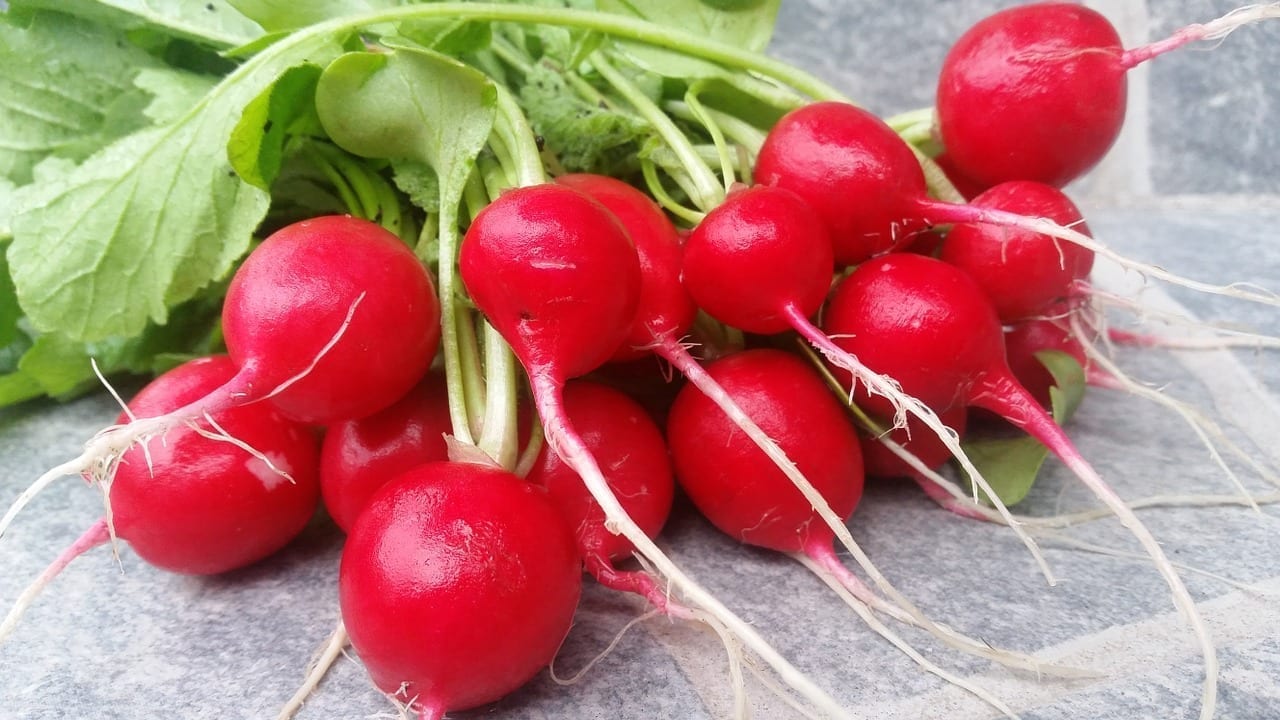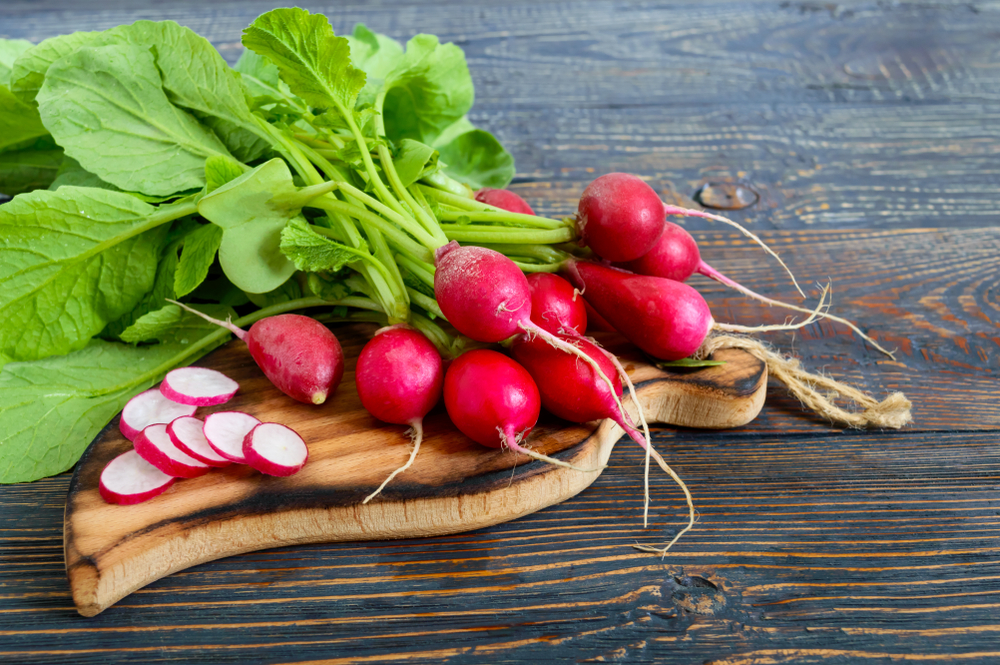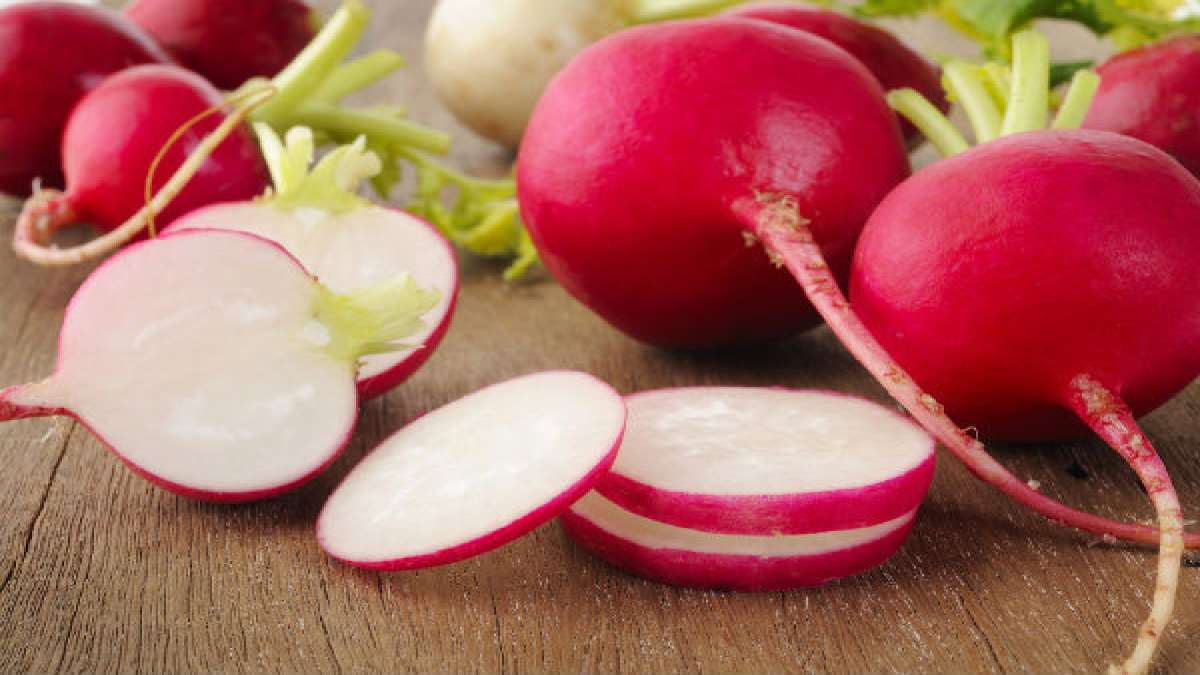The veggie might have a pretty impressive impact on your health.

You’ve probably had radishes in salads, but there are many ways to enjoy this crisp, refreshing veggie—and several reasons to eat them more often. Radishes, a cruciferous vegetable in the same plant family as kale and broccoli, offer some potentially impressive health benefits. Here are four major radish perks and healthy ways to incorporate them into meals and snacks.
Low in Calories and Provide a Range of Nutrients

One cup of raw radishes has fewer than 20 calories, just four grams of carbohydrates (nearly two grams of fiber), almost a gram of protein, and no fat. A cup of sliced radishes also provides about 30% of the daily value for immune-supporting vitamin C and small amounts of B vitamins, potassium, calcium, iron, and magnesium.1
Radishes Contain Health-protective Compounds

As a member of the superfood cruciferous veggie family, including cabbage and mustard, radishes contain natural sulfur-containing substances.2 Research has found that these compounds have been shown to reduce inflammation, protect cells against cancer-causing agents, and interfere with the growth of cancer cells.3
The compounds in radishes have also demonstrated antibacterial activity, including against Helicobacter pylori bacteria, which are linked to ulcers and stomach cancer.
Antioxidants May Help Fight Cancer
:max_bytes(150000):strip_icc()/radish-eyes-fb-2000-56e81d38d6944eb9b6cf6f3cf5338b49.jpg)
Antioxidants have indeed been shown to play a role in reducing inflammation and protecting cells from damage to fend off premature aging and disease.4
In a comprehensive review published in the journal Nutrients, researchers noted that radishes, which have been used in folk medicine since ancient times, provide several types of antioxidants. These are found in the veggie’s edible root, as well as in the sprouts, seeds, and leaves. Scientists believe the natural compounds may help guard against certain cancers, including cervical, breast, prostate, colon, liver, and lung cancer.5
May Protect Against Diabetes
A Population Health Metrics study projected that by 2060, the number of US adults diagnosed with diabetes would nearly triple. While eating more radishes alone won’t negate the risk, research shows a beneficial relationship between the veggie and the disease.6
A review published in Nutrients looked at the link between radishes and diabetes. This included radish root juice, extract, and sprouts.7
Researchers noted that the protective effects are likely related to the veggie’s ability to enhance the body’s antioxidant defense mechanism and positively impact hormonal-triggered glucose changes. Radishes also seem to reduce glucose absorption in the intestine and promote glucose uptake, which lowers blood sugar levels.
Don’t Forget Daikon Radishes
Daikon radishes, which are much larger and longer, are native to China and Japan. They can be spherical, oblong, or cylindrical and have white, pink, or purple flesh.8
This variety is also low in calories, at roughly 20 per cup. Each cup has about five grams of carbs, nearly two grams of fiber, no fat, and less than a gram of protein. One seven-inch daikon packs almost 125% of the daily value of vitamin C, which supports skin health and helps produce collagen. This portion also provides over 20% of the daily value for potassium, which helps regulate blood pressure and nerve and muscle function.9
Ways To Enjoy Radishes
Radishes grow easily and quickly, so you can plant them in your yard or in a pot. When buying radishes at your farmer’s market or grocery store, look for firm veggies with bright green, perky tops. They’ll store longer in the fridge if you remove the greens. But you can eat greens too. Radish greens are commonly eaten in Korea. Researchers say they may even have anti-obesity properties.10 Braise or saute, or add them raw to salads or pesto.
You might think a salad is the only way to enjoy radishes. But traditional red and daikon radishes can be eaten raw or cooked. You can place raw slices over toast covered with mashed avocado or hummus; add them to sandwiches, grain bowls, and tacos; or incorporate them into slaw. Dip fresh radishes into seasoned tahini, guacamole, bean dip, olive tapenade, or cashew cheese sauce.
You can cook radishes too, of course. Try to ven roast, grill, or sauté radishes with olive oil and garlic, and add them to hot dishes like stir-fries and soups.
Finally, radishes are amazing pickled or fermented and used as a garnish or side dish.
Enjoy radishes any way you prefer to garner their many health benefits, but eat them in moderation to prevent dips in blood sugar, and avoid them if you’ve had gallstones unless a healthcare provider has told you they’re OK.
Source: https://www.health.com








